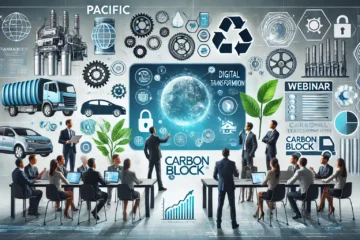Global Greenhouse Gas Emissions: A Comprehensive Overview
A Detailed View Of How Greenhouse Gas Emissions Are Impacting Lives Globally
Fueled by greenhouse gas emissions, the greenhouse effect plays a critical role in maintaining Earth’s temperature. Human activities, particularly since the Industrial Revolution, have significantly increased GHG emissions, primarily carbon dioxide (CO2), methane, nitrous oxide, and fluorinated gases. These emissions drive global warming, leading to climate change with severe impacts on weather patterns, air quality, agriculture, biodiversity, and human health. To combat this and achieve decarbonization, individuals and organizations must implement strategies to reduce emissions, adhere to frameworks like the Corporate Sustainability Due Diligence Directive (CSDDD), and adopt measures outlined in Scope 1, Scope 2, and Scope 3 of GHG accounting. Global cooperation is essential, as unilateral efforts are insufficient to address this complex challenge. Collaboration among countries is vital to compliance with climate policies and transitioning to a sustainable future.

Read on to learn how to reach your net-zero goals and remain steadfastly committed to sustainability values.
Introduction
GHG or Greenhouse gases are atmospheric gases that trap heat in the Earth’s atmosphere.
During the day, sunlight passes through the atmosphere, warming the Earth’s surface. At night, as the Earth’s surface cools, it releases heat into the air. However, some of this heat is trapped by the greenhouse gases present in the atmosphere. This process helps maintain the Earth’s average temperature at a comfortable level.
These gases function similarly to the glass walls of a greenhouse, hence the name greenhouse gases. Without this greenhouse effect, temperatures could plummet dangerously, making Earth uninhabitable.
Role Of Individuals and Organizations in GHG Emissions
Human activities have contributed to greenhouse gas emissions in the past few decades, significantly altering the Earth’s natural greenhouse effect. Scientists are nearly unanimous in their opinion that these gases are the primary drivers of global warming and climate change.
Since the Industrial Revolution, humans have been emitting larger quantities of greenhouse gases into the atmosphere. Over the past century, this emission rate has skyrocketed, resulting in global warming.
Global temperatures have surged in the last 30 years and are currently at their highest levels. To enhance clarity and transparency in GNG accounting and reporting, three distinct scopes – scope 1, scope 2, and scope 3 – have been established.
Scopes 1 and 2 distinguish direct and indirect emissions, meeting diverse organizational and climate policy needs. They are carefully defined to prevent duplicate accounting, which is crucial for GHG programs to avoid double counting.
Companies must report scopes 1 and 2 emissions separately, ensuring effective GHG management and alignment with varied climate policies and business goals. They must also mandatorily comply with the Corporate Sustainability Reporting Directive or CSRD regulation.
The Primary Greenhouse Gases
Carbon dioxide (CO2)
Carbon dioxide is released through various natural processes, including volcanic eruptions, plant respiration, and animal and human exhalation. These natural sources have maintained a balance in the Earth’s atmosphere for thousands of years. However, human activities have significantly disrupted this balance since the Industrial Revolution began in the 1800s.
The atmospheric concentration of CO2 has increased by approximately 50 percent, primarily due to the burning of fossil fuels for energy and transportation and large-scale deforestation. These activities release vast amounts of CO2 into the atmosphere, leading to its accumulation. Because of its abundance and long-lasting nature in the atmosphere, CO2 is recognized as the main contributor to climate change.
Methane
Methane is another potent greenhouse gas that occurs naturally through wetland decomposition and certain digestive processes in animals. However, human activities have significantly increased methane emissions, disrupting the natural methane cycle. One of the primary sources of human-induced methane emissions is cattle farming, particularly from cows’ digestive processes.
Landfill waste dumps also significantly contribute to methane emissions, as organic waste decomposes in oxygen-deprived conditions. Rice farming releases methane due to the lack of oxygen in flooded rice paddies. Traditional oil and gas production methods, especially from natural gas leaks, are further sources of methane emissions.
Methane is a potent greenhouse gas, with a warming potential several times greater than CO2 over a shorter timeframe. Thus, it is a significant contributor to climate change.
Nitrous Oxide
Nitrous oxide (N2O) is a greenhouse gas produced by natural and human activities. While natural sources like soil and ocean processes have contributed to the atmospheric levels of N2O over time, human activities have significantly accelerated its release.
The primary human-induced sources of nitrous oxide include the widespread use of commercial and organic fertilizers in agriculture. When these fertilizers break down in the soil, they release nitrous oxide. Fossil fuel combustion releases nitrous oxide into the atmosphere, particularly in vehicles and power plants.
The production of nitric acid, which is used in various industrial processes, is another significant source. Biomass burning, whether in wildfires or deliberate burning of forests, also releases nitrous oxide.
Although nitrous oxide is less abundant than CO2, it has a much higher long-term global warming potential.
Water Vapor
Water vapor is the most abundant greenhouse gas in the Earth’s atmosphere. Unlike other greenhouse gases, water vapor does not have a direct human-induced source. Instead, it increases in the atmosphere due to the warming caused by other greenhouse gases, particularly CO2.
As the Earth’s atmosphere warms due to the increased concentration of greenhouse gases, more water evaporates from the oceans and other bodies of water, leading to higher levels of water vapor.
However, unlike CO2, which can persist in the atmosphere for centuries, water vapor has a short atmospheric lifetime of only a few days. Water vapor is a natural part of the Earth’s climate system, but its levels can amplify the effects of other greenhouse gases.
Manmade Greenhouse Gases
Hydrofluorocarbons (HFCs), Perfluorocarbons (PFCs), and Sulfur Hexafluoride (SF6) are the three fluorinated, exclusively man-made gases generated during industrial processes. Despite their relatively low atmospheric concentrations, these gases have a remarkably high heat-trapping ability, making them exceptionally potent greenhouse gases.
Sulfur hexafluoride (SF6), in particular, stands out for its extraordinary potency with a Global Warming Potential (GWP) several thousands of times greater than that of carbon dioxide.
The Key Impact of Greenhouse Gas Emission
Greenhouse gas emissions have significant environmental impacts, primarily through the greenhouse effect. These effects include:
Climate Change
Greenhouse gases trap heat in the atmosphere, causing global warming and alterations in weather patterns. This results in more frequent and severe extreme weather events, such as heat waves, floods, droughts, and rising sea levels.
Respiratory Diseases
Greenhouse gases contribute to air pollution, leading to respiratory diseases in humans due to smog and poor air quality.
Agricultural Impact
Emissions from agriculture, particularly methane from livestock and nitrous oxide from fertilizers, affect agricultural productivity and contribute to greenhouse gas emissions.
Biodiversity Loss
The rise in greenhouse gas concentrations intensifies global warming beyond natural levels, impacting biodiversity and ecosystems. Climate changes can lead to species extinction, migration, or habitat loss.
Reducing greenhouse gas emissions and their adverse environmental impact is extremely important. This can help us combat climate change and its severe fallouts effectively.
How To Measure Greenhouse Gas Emissions
The standard metric used to quantify GHG emissions is carbon dioxide-equivalents or CO2e. This metric is widely adopted and utilized by various organizations, including the United Nations Framework Convention on Climate Change (UNFCCC), for official GHG reporting and target-setting.
Carbon dioxide-equivalents allow for comparing the warming effect of different greenhouse gases based on their global warming potential (GWP) relative to carbon dioxide. Since various greenhouse gases have different levels of heat-trapping potency, CO2e provides a standardized measure to express the total impact of all GHG emissions in terms of CO2.
How To Reduce Greenhouse Gas Emissions
Various strategies can be implemented in our daily lives and communities to reduce greenhouse gas emissions.
- At Home
Energy Efficiency
- Adjust thermostat settings appropriately.
- Use cold water for laundry.
- Run fans instead of air conditioning.
- Use energy-efficient appliances.
- Ensure proper home insulation to minimize energy consumption.
Reduce Household Waste
- Limit purchases of new items and reuse existing products.
- Transition to reusable alternatives.
- Recycle materials as far as possible.
- Compost food scraps to minimize waste generation and associated emissions.
- In Food Consumption
Use Plant-Based Diet
- Reduce meat consumption.
- Prioritize plant-based foods such as beans, nuts, and whole grains.
- They help lower greenhouse gas emissions associated with food production.
Support Sustainable Agriculture
- Choose regenerative farming practices.
- They promote soil health and minimize emissions from agricultural activities.
Reduce Food Waste
- Plan meals efficiently
- Refrigerate surplus food
- Compost organic waste to minimize emissions from food disposal.
- While On The Go
Reduce Car Use
Go walking, cycling, or use public transportation instead of personal vehicles.
Support infrastructure improvement efforts to support non-motorized travel.
Choose Mass Transit
- Travel using buses or trains whenever possible
Efficient Driving
- Consider switching to electric vehicles powered by renewable energy sources.
- Maintain vehicles for optimal efficiency.
- Adopt eco-friendly driving habits to reduce emissions.
- In Your Community
- Support initiatives that promote green spaces, sustainable ecosystems, and investments in renewable energy and public transportation.
- Support policies that prioritize sustainability and combat climate change at the community level.
The Corporate Sustainability Due Diligence Directive (CSDDD) requires businesses to identify, prevent, mitigate, and end environmental harms and human rights violations within their value chains. This directive is crucial for promoting corporate sustainability, accountability, and ethical business practices.
Conclusion
Addressing the immense challenge of climate change necessitates global cooperation and collaboration. Unilateral actions are unlikely to dent the process. Countries must unite to achieve compliance with critical aspects of decarbonization, sustainability, and other key climate policies. By working together, nations can enact meaningful change, reduce greenhouse gas emissions, and safeguard the planet for future generations.

